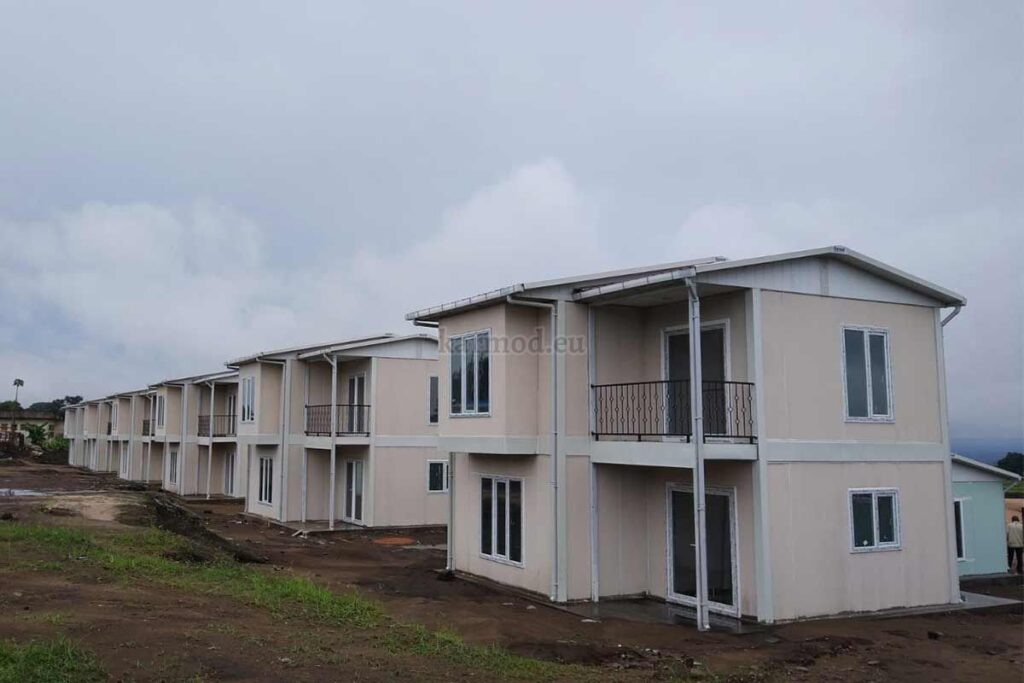
Structural engineering in modular construction and its implications for the future
In recent years, modular construction has emerged as a revolutionary approach in the building industry. At its core, it involves constructing sections of a building, known as modules, in a factory setting before transporting them to a construction site for assembly. This method not only promises efficiency and sustainability but also poses exciting opportunities for the field of structural engineering. As home enthusiasts explore new ways to innovate, understanding the intricacies of structural engineering in modular construction becomes paramount.

The Role of Structural Engineering
Structural engineering plays a critical role in ensuring that modular buildings are safe, efficient, and aesthetically pleasing. Engineers are responsible for designing the structural framework of each module, ensuring it can withstand transportation stresses and the final assembly’s environmental conditions. This is a complex task, as engineers must account for various factors, including load distribution, material strength, and connection integrity.
Designing for Transport and Assembly
One of the unique challenges of structural engineering in modular construction is designing modules that are robust enough to endure transportation. This requires innovative engineering solutions to prevent damage during transit. Additionally, structural engineers must ensure that each module fits perfectly with others on-site, necessitating precise calculations and designs.
Material Selection and Sustainability
The choice of materials is crucial in modular construction. Engineers often opt for lightweight yet durable materials that facilitate easy transport and assembly. Moreover, with growing environmental concerns, there is a push towards sustainable materials that minimize the carbon footprint. This trend aligns with the broader goals of modular construction, which include reducing waste and improving energy efficiency.
Benefits of Modular Construction
Modular construction offers numerous advantages over traditional building methods. Firstly, it significantly reduces construction time. Since modules are built in a controlled factory environment, there are fewer delays due to weather or site conditions. Additionally, factory settings often allow for better quality control and reduced waste.
Cost Efficiency
Another notable benefit is cost efficiency. Modular construction can be more affordable than traditional methods, as it reduces labor costs and construction timelines. Furthermore, the efficient use of materials and reduced waste contribute to overall cost savings.
Flexibility and Customization
Modular construction also offers flexibility and customization options. Homeowners can choose from various designs and layouts, tailoring their homes to their specific needs and preferences. This flexibility extends to structural engineers, who can experiment with different designs and materials in a controlled environment.
Challenges in Modular Construction
Despite its advantages, modular construction is not without challenges. One of the primary obstacles is the need for precise engineering and design to ensure all modules fit together seamlessly. This requires advanced technology and meticulous planning.
Transportation and Logistics
Transporting large modules from the factory to the construction site can be logistically challenging. Engineers must consider the size and weight of modules, as well as the routes and methods of transportation. Any mishap during transit can lead to costly delays and repairs.
Building Codes and Regulations
Another challenge is navigating building codes and regulations. Since modular construction is relatively new, existing codes may not always apply. Structural engineers must work closely with authorities to ensure compliance while advocating for updated regulations that accommodate modular methods.
The Future of Modular Construction
The future of modular construction looks promising, with technological advancements paving the way for more innovative solutions. As digital tools and software improve, engineers can design more complex and efficient modules.
Integration with Smart Technology
One exciting development is the integration of smart technology into modular buildings. This includes the use of IoT devices and smart home systems that enhance the functionality and sustainability of modular homes. For more about this intersection, visit modular design.
Global Expansion
As awareness and acceptance of modular construction grow, we can expect to see its adoption on a global scale. Countries facing housing shortages are particularly interested in its potential to deliver affordable and sustainable housing solutions quickly. To learn more about modular’s role in the housing crisis, check out this report.
Conclusion
Structural engineering in modular construction is a dynamic field that offers immense potential for innovation in home building. As technology advances and environmental concerns grow, modular construction stands out as a sustainable, efficient, and adaptable solution. For home enthusiasts and industry professionals alike, the possibilities are endless, and the future looks bright.

FAQs
What is modular construction?
Modular construction involves building sections of a structure in a factory and assembling them on-site. This method offers efficiency and sustainability benefits over traditional construction.
How does structural engineering contribute to modular construction?
Structural engineers design the framework of each module, ensuring they are safe, durable, and fit together seamlessly when assembled on-site.
What are the main advantages of modular construction?
Modular construction reduces building time, offers cost savings, and provides flexibility in design. It also supports sustainability goals through efficient material use and reduced waste.
This article contains affiliate links. We may earn a commission at no extra cost to you.